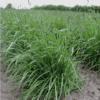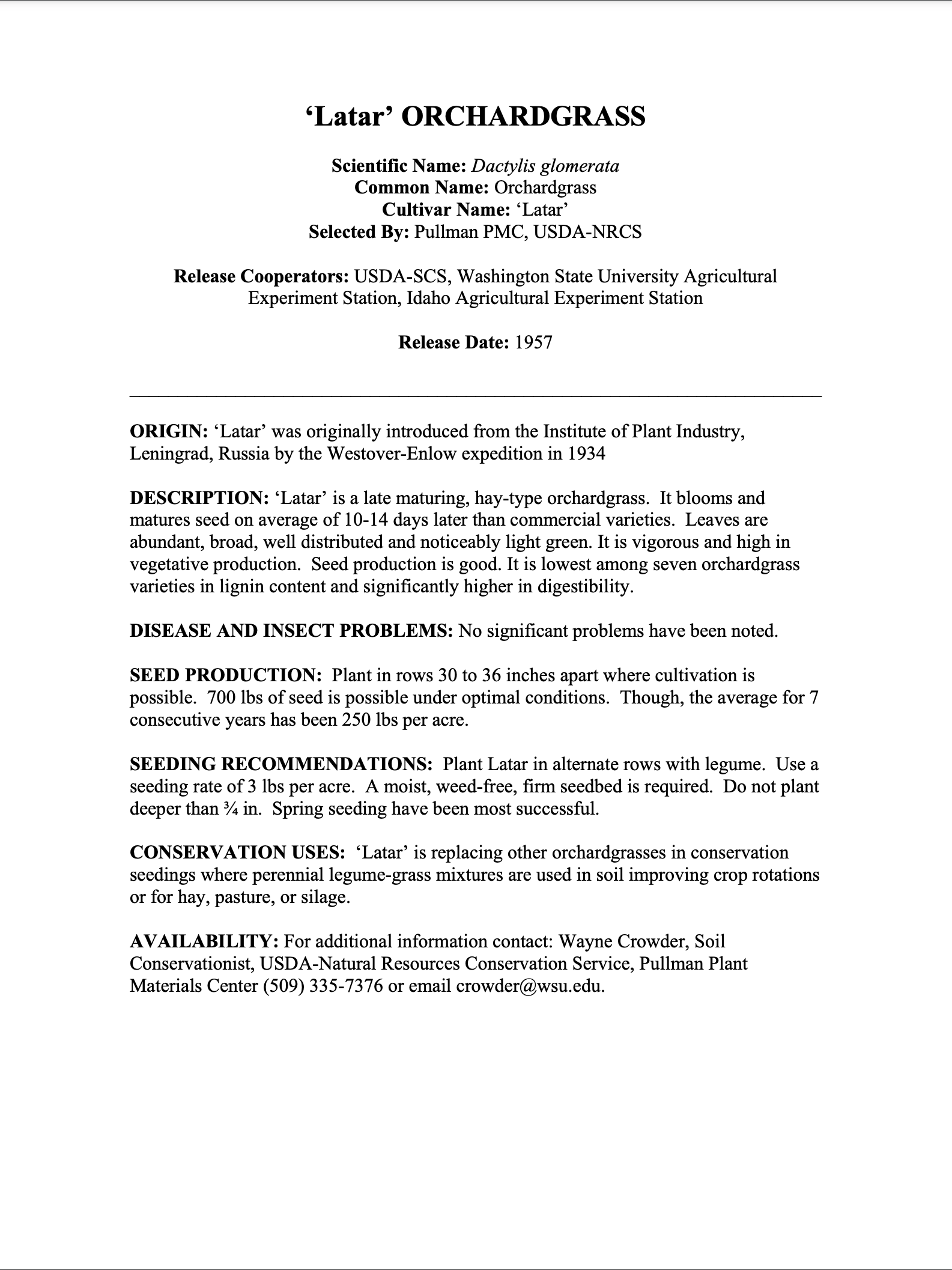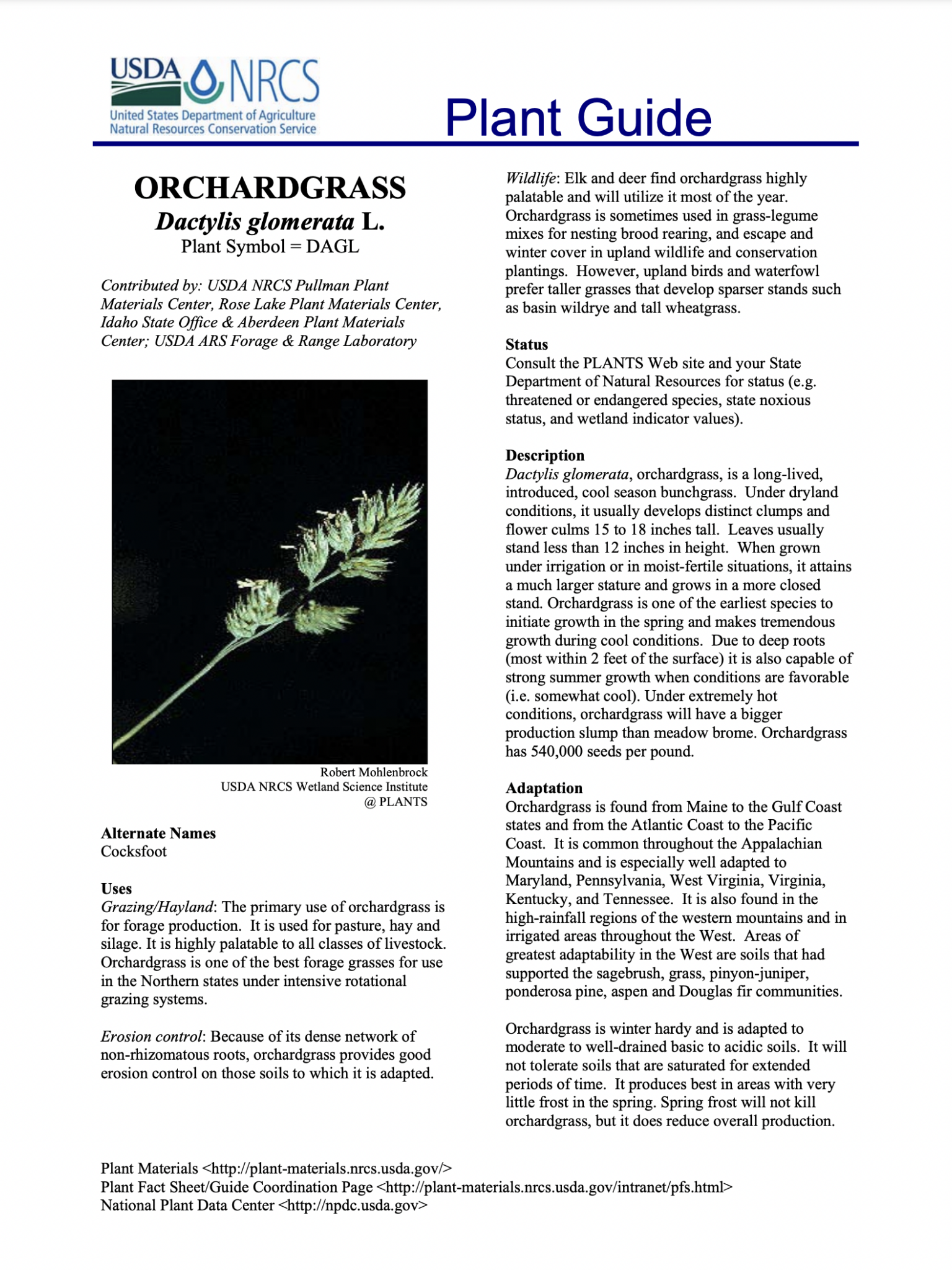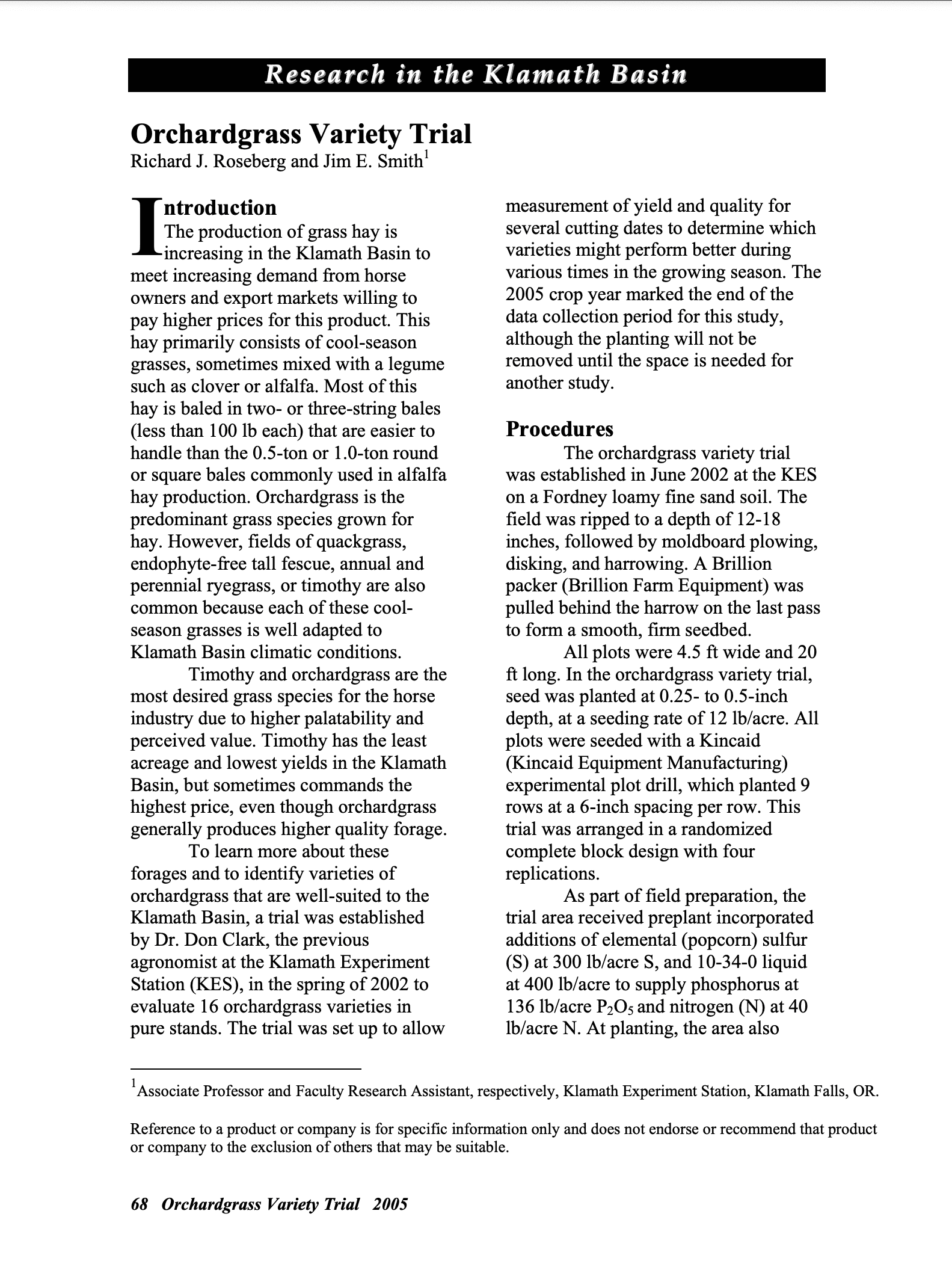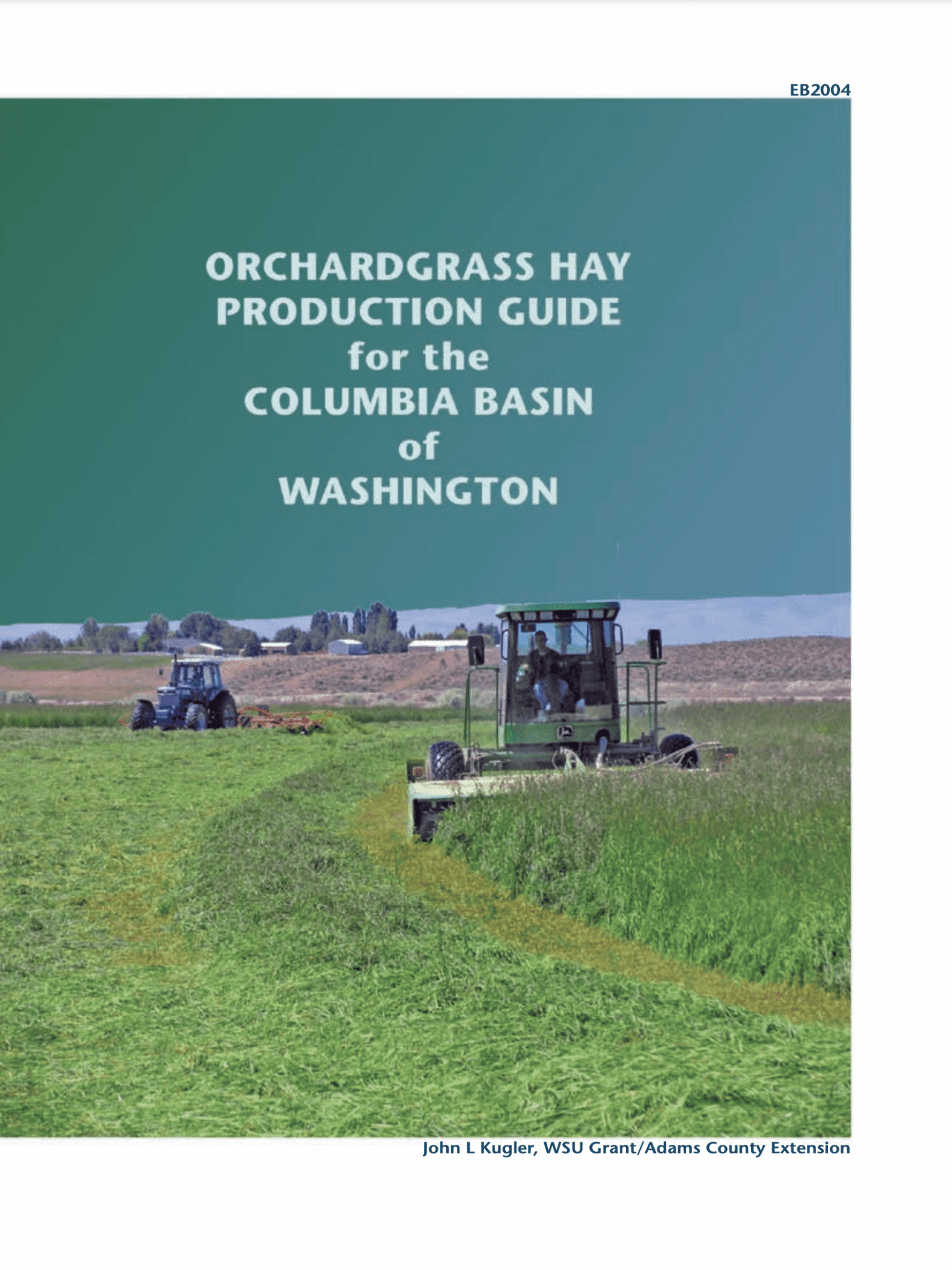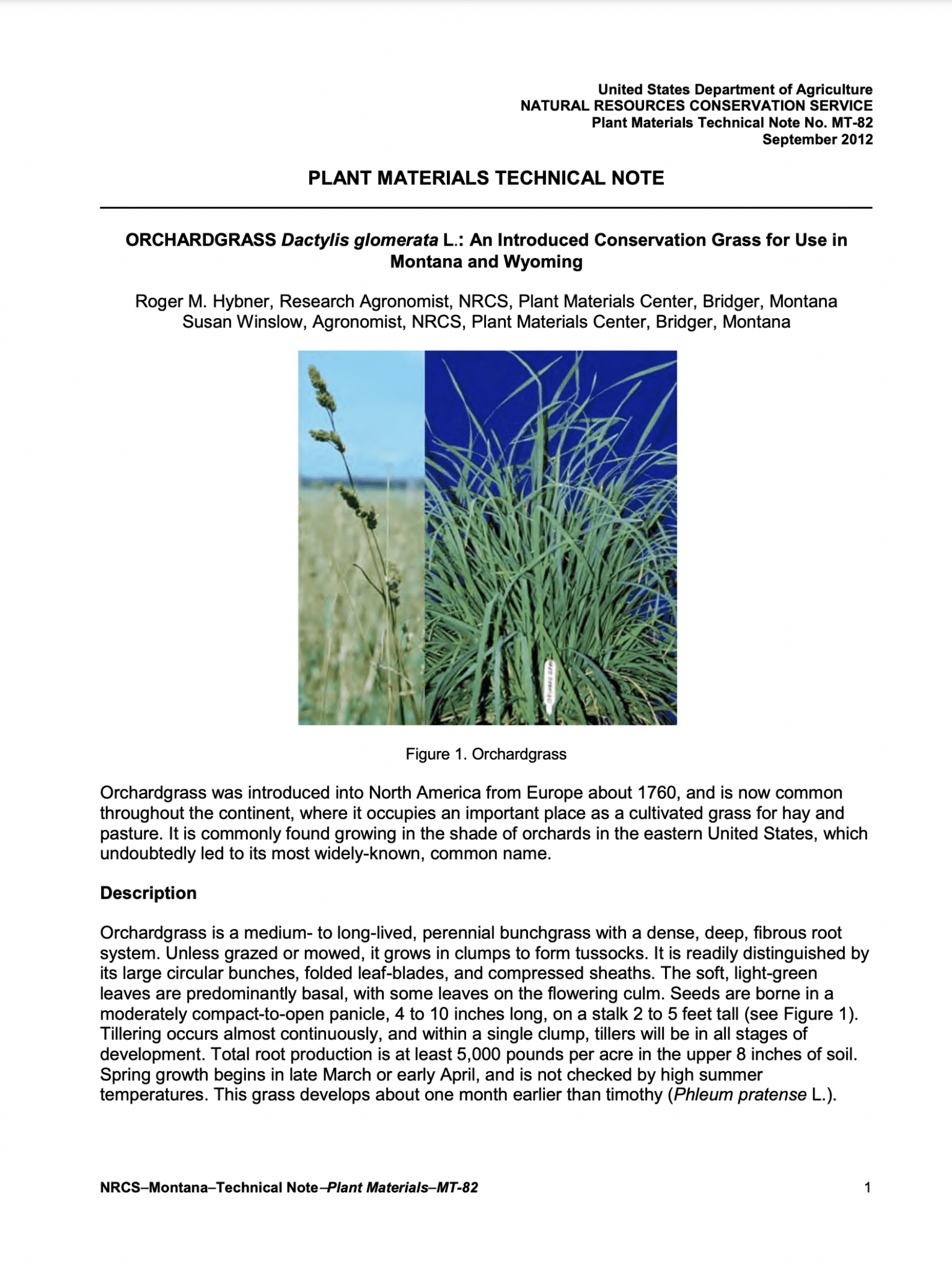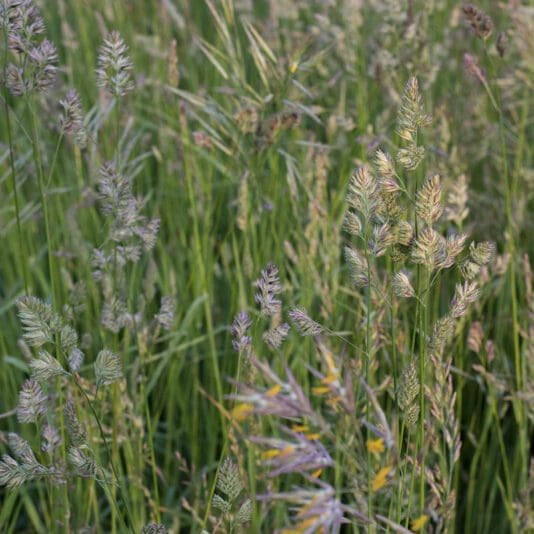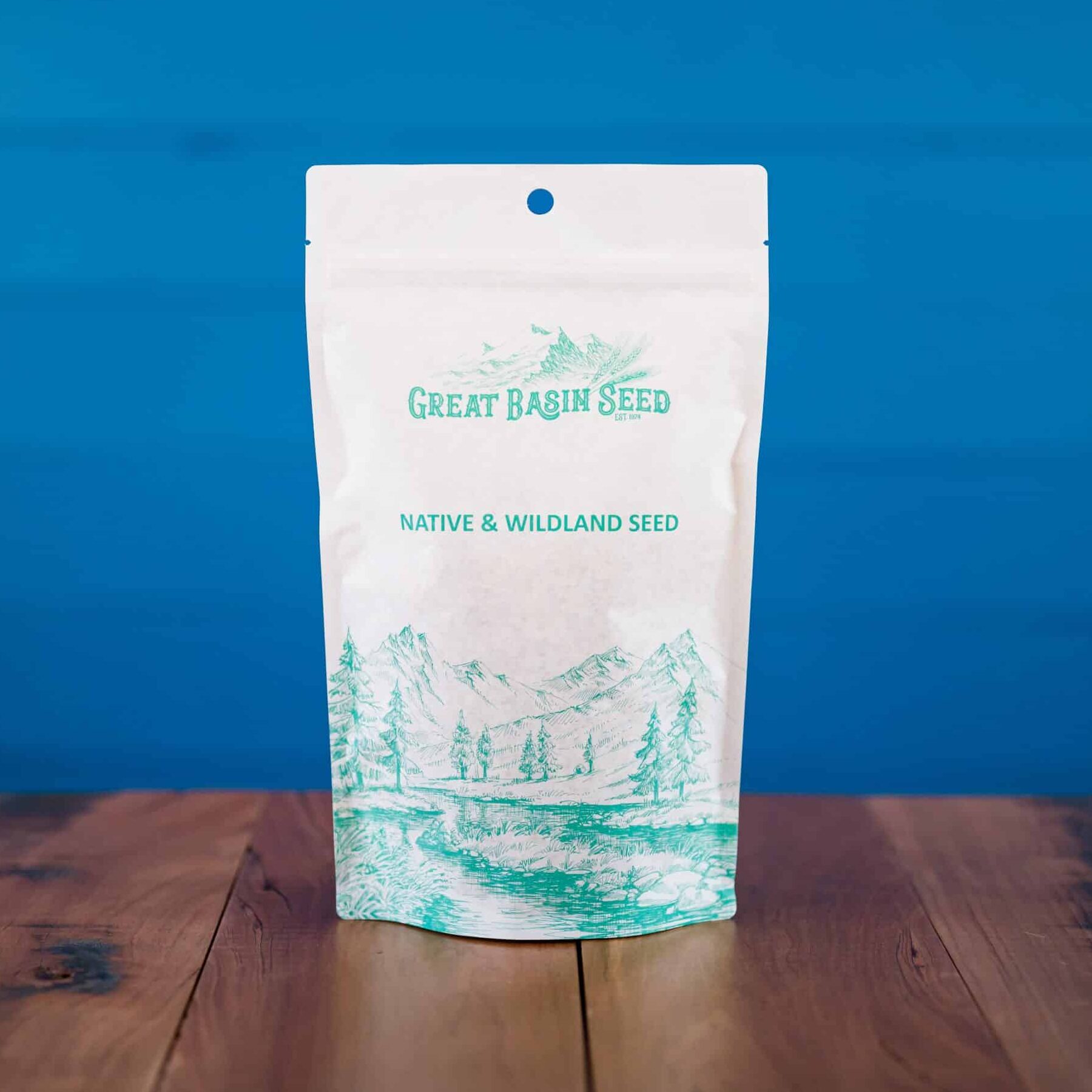Min. to Max. Annual Precipitation
44in.
Average Max. Height
Latar Orchardgrass (dactilis glomerata) is a late maturing, hay-type forage production grass. This variety has abundant, broad, well distributed and noticeably light green leaves. Seed production is good. This is an excellent choice for blending with alfalfa.
Latar Orchardgrass (dactilis glomerata) is listed here for historical and agronomic reference. Great Basin Seed no longer stocks the Latar variety. Latar is an “old” late-maturing variety that is outperformed by new varieties with superior genetics and improved plant breeding.
Latar is still requested by a few advocates of the variety who have successfully used it for years – if not decades. We encourage these customers to try the new varieties and test their performance. We highly recommend the following varieties:
Extend Orchardgrass: A late maturing, persistent variety with excellent vigor. Excellent for pastures and alfalfa.clover mixes.
Haymaster Orchardgrass: A late maturing variety know for it’s fast recovery and high palatability.
Quickdraw Orchardgrass: Late maturing with fast recovery and heat tolerance. A favorite in the Intermountain West.
Latar Orchardgrass (Dactylis glomerata) is considered an “older” variety released officially to the US market in 1957. Despite market competition with a myriad of new “improved” varieties it continues to thrive as an excellent late maturing, hay-type forage production orchard grass.
This variety matures 10 to 14 days later than common orchardgrass and is usually in the pre-bloom stage when alfalfa is at the optimum growth stage for cutting hay. Therefore a mixture of Latar and alfalfa makes high quality hay. Forage yields of are at least as much per acre as the earlier maturing varieties and forage quality is generally superior.
It has low lignin (fiber) content and digestibility is very high. It is vigorous and high in vegetative production. Seed production is good. It is lowest among seven orchardgrass varieties in lignin content and significantly higher in digestibility. This is an excellent choice for blending with Alfalfa. It will not “head-out” before alfalfa is ready to cut because of it’s later maturity date.
Latar is a late maturing, hay-type orchardgrass. It blooms and matures seed on average of 10-14 days later than commercial varieties. This variety has abundant, broad, well distributed and noticeably light green leaves. It is vigorous and high in vegetative production. Seed production is good. It is lowest among seven orchardgrass varieties in lignin content and significantly higher in digestibility.
***Click on the “Quick Plant Facts” tab above for more information.
| Variety | Maturity | Notes: |
|---|---|---|
| Paiute | Early | Drought tolerant. Common in dryland pastures, reclamation, erosion control. |
| Hallmark | Early | High Yielding |
| Benchmark Plus | Early | Persists under heavy use, superior forage. Superior for grazing. |
| Potomac | Early-Mid | Excellent early variety. |
| Quickdraw | Early-Mid | Fast recover after cutting. Tolerates heat. |
| Pawnee Orchardgrass | Mid | Widely adapted, drought and grazing tolerant. |
| Crown Royal | Mid-Late | Fast recovery after cutting, tolerates heat. |
| Extend | Mid-Late | Ideal for alfalfa & clover mixes. Superior yield. |
| Blizzard | Late | Superior winter survival. Widely adapted, excellent forage yield. |
| Sunset Orchardgrass | Late | Excellent for use with hay, clover or pasture mixes. Improved foliar disease resistance. |
| Sundown Orchardgrass | Late | Aggressive tillering and fast re-growth. Maturity is similar to that of Pennlate. |
| Latar | Late | Old variety with limited availability. Extend, Quickdraw, Sunset and Sundown are improved varieties. |
‘Latar’ Orchardgrass NRCS Plant Release
‘Latar’ Orchardgrass NRCS Plant Release
PDF version of Pullman PMC, USDA-NRCS
Release Cooperators: USDA-SCS, Washington State University Agricultural Experiment Station, Idaho Agricultural Experiment Station
Orchardgrass NRCS Plant Guide and Fact Sheet
Orchardgrass NRCS Plant Guide and Fact Sheet
PDF version of NRCS Plant Guide & Fact Sheet
Prepared By: Tony Bush USDA NRCS Rose Lake PMC East Lansing, Michigan
Dan Ogle USDA NRCS Idaho State Office Boise, Idaho
Loren St. John USDA NRCS Aberdeen PMC Aberdeen, Idaho
Mark Stannard USDA NRCS Pullman PMC Pullman, Washington
Dr. Kevin B. Jensen USDA ARS Forage and Range Research Laboratory, Utah State University, Logan, Utah
Species Coordinator: Mark Stannard USDA NRCS Pullman Plant Materials Center
Pullman, Washington
Orchardgrass Variety Trial 2005
Orchardgrass Variety Trial 2005
Research in the Klamath Basin
Prepared By: Richard J. Roseberg and Jim E. Smith
Orchardgrass Hay Production Guide for the Columbia Basin of Washington
Orchardgrass Hay Production Guide for the Columbia Basin of Washington
Prepared By: John L Kugler, WSU Grant/Adams County Extension
Orchardgrass NRCS Plant Materials Technical Note
Orchardgrass NRCS Plant Materials Technical Note
An introduced Conservation Grass for Use in Montana and Wyoming
Prepared By: Roger M. Hybner, Research Agronomist, NRCS, Plant Materials Center, Bridger, Montana
Susan Winslow, Agronomist, NRCS, Plant Materials Center, Bridger, Montana
Helpful Links
Additional information about this product can be found on the academic websites linked below.
Synonyms
Many plants have more than one common and scientific name. We've listed a few of them below.
- Latar Orchardgrass
- Dactylis glomerata
Who is Great Basin Seed?
Great Basin Seed is a seed company that specializes in seed sales and consultation for home, ranch, farm, range and reclamation. We have been a leader in the seed industry since 1974.
Our History
We've been in the seed business since 1974.
What We Offer
We offer seed for home, farm, ranch, range and reclamation projects.
Meet the Gang
We have the best employees in the world! We are proud of the work they do, and trust them to serve you!
Right: Company founder Lloyd and his wife Paula Stevens in a wildflower seed production field circa 1977
Quick Plant Facts
| Common Name: | Latar Orchardgrass |
|---|---|
| Scientific Name: | |
| Lifespan: | |
| Plant Type: | |
| pH Tolerance: | |
| Seed Count | 540,000 |
| Root Form | Sodformer |
| Sowing Rate | 2-4 PLS lbs. per Acre |
| Min. Precipitation | 16 Inches Minimum |
| Best SowingTime | Fall or Spring |
| Max Sowing Depth: | |
| Growth Season: | |
| Sun & Shade Tolerance: | Full Shade Tolerant |
| Elevation of Occurance: | |
| Hardiness Zones: |

